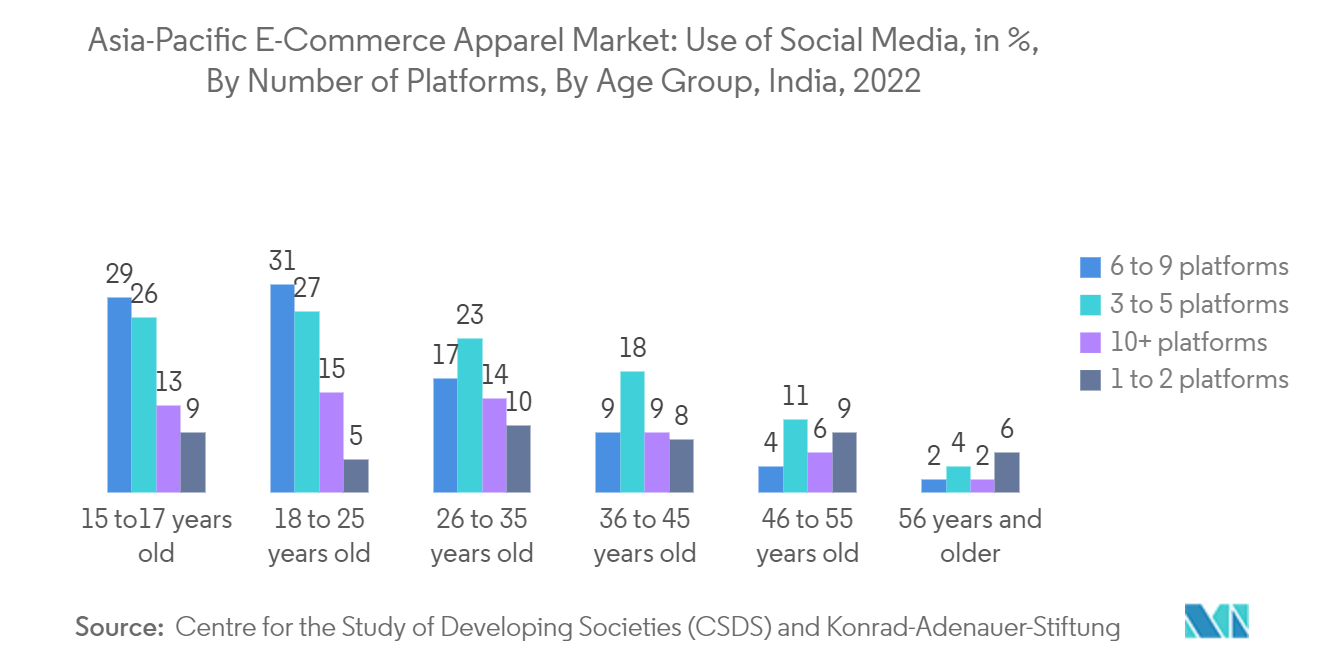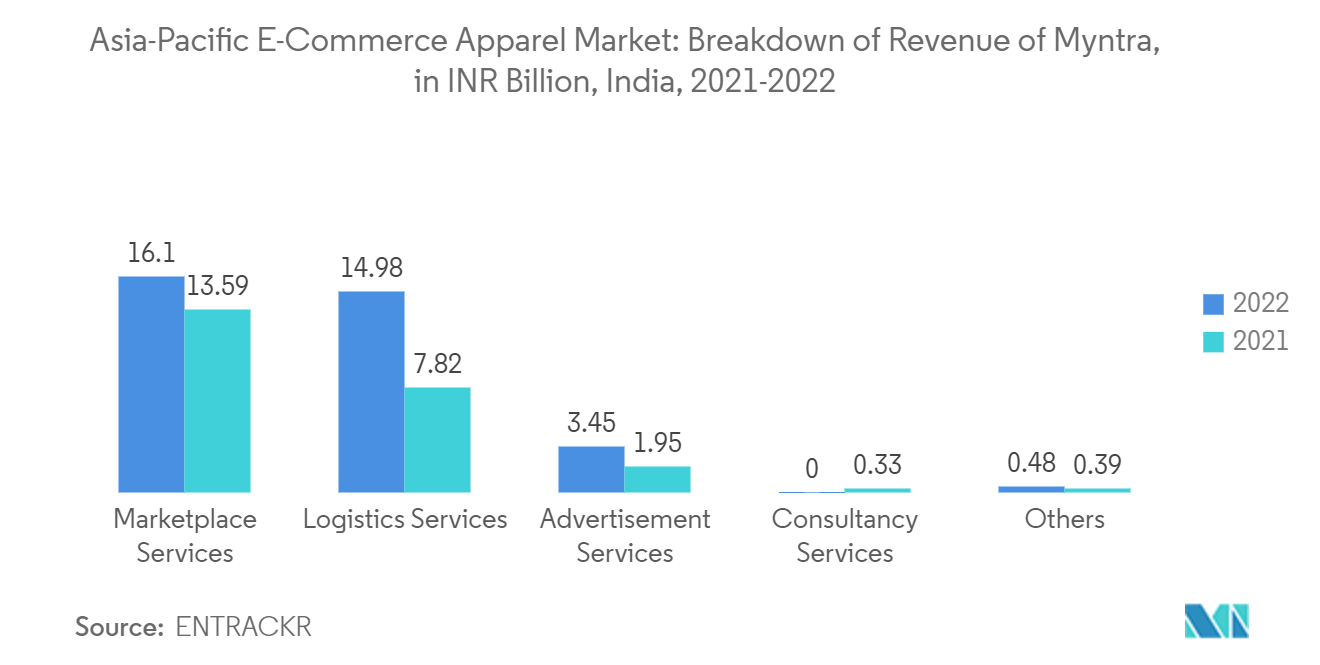Market Trends of Asia-Pacific E-Commerce Apparel Industry
Strong Growth of Fashion Marketplaces
- Prominent companies are employing social media tactics to increase their brand awareness and visibility. As a result, these strategies help companies increase revenue. Social media has emerged as one of the most strategic marketing tools. Further, fashion influencers are redefining the industry and are slowly becoming today's modern entrepreneurs, thus driving e-commerce apparel market demand across the region.
- For instance, in June 2023, as part of its 18th Marquee Fashion Festival, which is the end-of-season sale, fashion e-commerce platform Myntra announced the official launch of Myntra Minis, a short-form video platform. The company claims that the newly introduced feature draws inspiration from the popular format of short video clips used by social media platforms to showcase new launches and trends throughout the world and highlights products from various categories.
- In addition, social media enables businesses to connect with an increasing number of social network users and potential target markets. Brands and companies are making use of Instagram and Facebook to appeal to younger audiences through their visual content and advertise their discounts/flash sales to attract customers, thus supporting brand advocacy through impressive, powerful channels. Further, fashion influencers are redefining the industry and are slowly becoming today's modern entrepreneurs, thus driving e-commerce apparel market demand across the region.
- Moreover, celebrity brand endorsements help gain customer attention and trust in the brand. As a result, companies/brands partner with sports athletes, actors, etc. For instance, in March 2023, Online major Parimatch's sportswear brand announced Dinesh Karthik, an Indian cricketer, as its brand ambassador. Therefore, all these factors drive the e-commerce apparel market in the Asia-Pacifc region.

India is the Fastest-Growing Country Across the Region
- In India, many manufacturers of fashion-related products have started selling their products through their websites in addition to third-party online retailers. For instance, in March 2023, Guugly Wuugly, an Indian kids' apparel brand, announced the launch of its new website platform, which allows customers to exchange their children's old clothes for store credit to purchase new products.
- In addition, the company also launched a digital factory outlet where high-quality garments that had minor defects or failed quality checks can be purchased at a discount of up to 40% to 60%.
- Additionally, few government initiatives in this country further boost the sales of the e-commerce apparel market. For instance, in March 2022, the Union Department for Promotion of Industry and Internal Trade in India announced its plans to launch an Open Network for Digital Commerce to democratize e-commerce and bring micro, small, and medium enterprises online. They claim that ONDC uses an open-source methodology to bring buyers and sellers onto a single platform to retail everything from clothing to lifestyle. The initiative has been designed to break the monopoly of e-commerce giants in the Indian online retail market, such e-commerce giants include Flipkart and Amazon, both foreign-owned entities. These initiatives act as major market drivers the small-scale e-commerce apparel companies.
- Also, Myntra has dominated the fashion e-commerce marketplace in terms of share. Myntra, the dominant player in the market, has completely transformed the fashion e-commerce industry. Ajio, which is funded by Reliance, and Tata Cliq, which is owned by Tata, have been able to establish a solid presence with a steadily increasing market share over the past few years. All markets are competing for customers' attention and fostering brand loyalty. Indian fashion e-commerce is a sizable market with the potential for numerous marketplaces to co-exist and develop their respective industries.
- Further, the expansion of Internet and smartphone use in India is another element boosting the country's online fashion retail business. According to data given by the Telecom Regulatory Authority of India (TRAI) in August 2021, the total number of internet users in India increased from 795.18 million at the end of December 2020 to 825.30 million at the end of March 2021.


